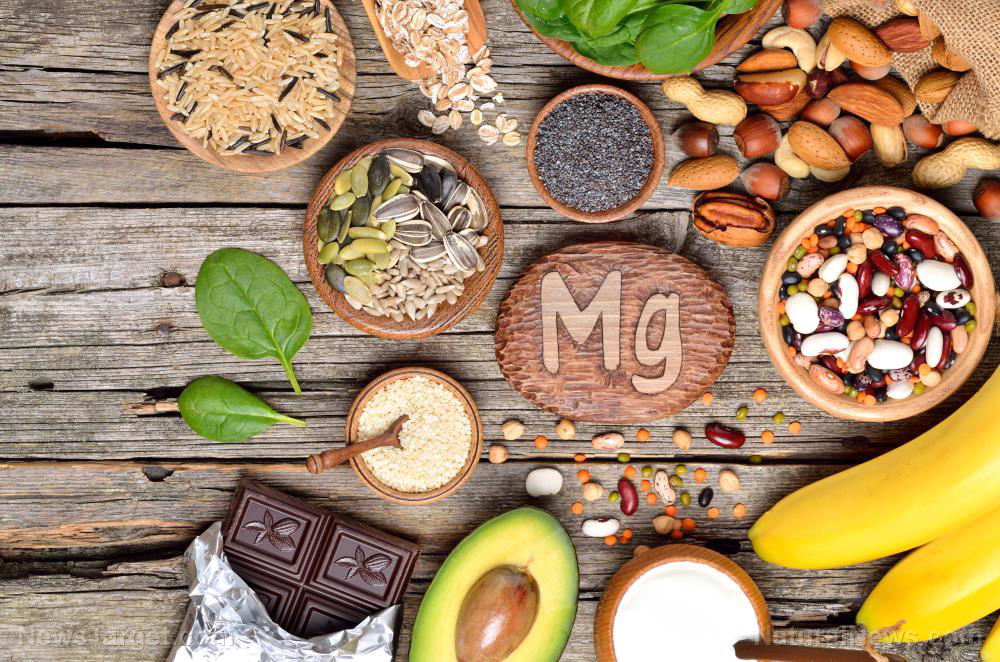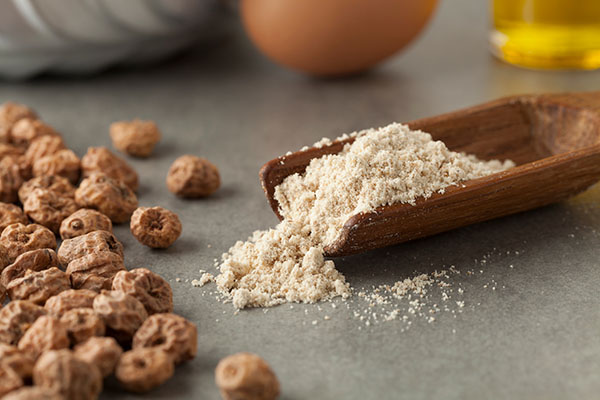
Advertisement
There’s no other way to say it: magnesium is an extremely important mineral.
Magnesium, much like calcium, phosphorus, sodium, potassium, chloride and sulfur, is considered a macromineral. This means that it is needed in much larger amounts by the body in order for it to stay in healthy shape. This is in contrast to trace minerals which, as their name suggests, are needed in much smaller quantities.
But what makes magnesium so special? And what makes it so important in the human body?
According to nutritionists, magnesium is involved in over 300 bodily processes, including the natural production of health-supporting antioxidants like glutathione and the metabolization of Vitamin D.
In addition, magnesium is also linked to the following health benefits:
- Magnesium promotes a healthy cardiovascular system – Magnesium is necessary for maintaining optimal heart health and cardiovascular function. It is also known to work in tandem with iron in order to help keep the body’s metabolic and cardiovascular systems working efficiently.
- Magnesium promotes and encourages natural relaxation – A particularly potent mineral, magnesium has been found to be effective at relaxing muscles and relieving muscular contractions. This means that having adequate amounts of magnesium in the body can help prevent cramps and other similar issues.
- Magnesium supports healthy muscle growth – Magnesium is necessary for healthy muscle growth and development. In addition, a study even suggests that magnesium can help maintain healthy muscle flexibility, making it a boon for athletes and those who engage in an active lifestyle.
- Magnesium promotes healthy bone growth – Magnesium is also linked to optimal calcium absorption, which then results in greater bone density. This is because the two minerals work together to ensure they both end up in your bones and teeth. In fact, strong and healthy human bones often contain roughly 60 percent of all your body’s magnesium reserves.
- Magnesium promotes improvements in your mood – If you ever find yourself getting overly tense and anxious for no reason, you might want to check your magnesium intake. This is because low levels of magnesium have been linked to low levels of serotonin, which is considered by most as a natural feel-good chemical.
Despite its importance to the human body, however, not everyone is getting their fill of magnesium. In fact, according to the US Department of Agriculture, roughly 50 percent of all Americans do not meet the daily recommended intake of this important mineral.
It’s a good thing then, that there is an abundance of delicious magnesium-rich foods that one can choose from, such as the following::
Bananas
Bananas, according to recent statistics, are among the most popular fruits in the United States, with each American eating an average of 28.2 pounds of the tropical fruit annually.
However, while bananas are best known for their high potassium content, which experts say is linked to a reduced risk of heart disease, they are also quite rich in magnesium.
One large banana, for example, packs 37 milligrams of the mineral, or approximately 9 percent of the RDI.
This is in addition to its vitamin C, vitamin B6, manganese and fiber content, which experts say helped the banana garner its title as a superfood.
Dark Chocolate
Dark chocolate may taste very decadent and sinful but it’s actually a good source of magnesium, with a 1-ounce or 28-gram serving containing 64 mg of the mineral or roughly 16 percent of the RDI.
Aside from magnesium, dark chocolate is also loaded with beneficial antioxidants such as flavanols, which help prevent low-density lipoprotein (LDL) or bad cholesterol from oxidizing and sticking to the cells lining your arteries.
Planning to get a chocolate bar for snacking? Make sure you choose a product containing at least 70 percent cocoa solids or even higher to make the most of dark chocolate’s benefits.
Want to maximize the benefits even more? Melt some dark chocolate and slather it on top of a banana. You’re welcome.
Avocados
As it turns out, the avocado, aside from being loaded with healthy fats, is also a good source of magnesium. In fact, a single, medium-sized avocado can provide up to 58 mg of magnesium, or 15 percent of the RDI.
Not only that, but the breakfast and brunch staple is also high in important nutrients such as potassium, B vitamins, vitamin K and dietary fiber.
Long story short, there’s absolutely nothing wrong with adding more guac to your plate of whole-grain flatbreads and vegetable sticks. You can thank us later.
Nuts and seeds
Nuts aren’t just tasty morsels that are fit for snacking — they’re also incredibly nutritious foods that one should be eating more of.
Some nuts, such as almonds, cashews and Brazil nuts, for instance, are packed with essential nutrients as well as vitamins and minerals such as magnesium.
For instance, a 1-ounce or 28-gram serving of cashews contains 82 mg of magnesium — an amount equivalent to 20 percent of the RDI.
Not only that, but most nuts are also a good source of fiber and monounsaturated fat, both of which are known to improve blood sugar and cholesterol levels in people with diabetes.
Just like nuts, seeds, such as flax, pumpkin and chia are among the most nutritious food items on the planet, especially when it comes to magnesium.
For example, bar food staple pumpkin seeds contain 150 milligrams of the mineral in a 1-ounce or 28-gram serving. This, experts say, amounts to a whopping 37 percent of the RDI.
In addition, seeds are rich in iron, monounsaturated fat, fiber and omega-3 fatty acids.They also contain antioxidants, which protect your cells from harmful free radicals that abound in the environment.
Legumes
If you enjoy grabbing a bowl of hot chili and other bean-heavy dishes every now and then, chances are you’re already getting your fair share of magnesium.
This is because legumes are rich in many different nutrients, magnesium included.
For instance, a 1-cup serving of cooked black beans contains an impressive 120 milligrams of magnesium, which is around 30 percent of the RDI.
In addition, legumes are also high in potassium, iron and protein. They also contain a lot of fiber, making them a type of functional food unlike any other.
Tofu
Tofu, which is made by pressing soybean milk into soft white curds, is considered by many to be a staple food in vegetarian diets due to its high protein, calcium, selenium and manganese content.
What most people don’t know, however, is that this traditional Asian food item is also rich in magnesium. In fact, a 3.5-ounce or 100-gram serving of tofu contains 53 milligrams of magnesium, which is estimated to be 13 of the RDI.
TIP: Tofu can be quite bland on its own. Fix this by marinating it in a marinade of gochujang — a traditional Korean chili and garlic paste — and some soy sauce before pan-frying it like a steak.
Whole Grains
Much like seeds, grains such as wheat, oats barley, buckwheat and quinoa are considered to be quite rich in many essential nutrients such as protein, antioxidants, B vitamins, selenium, manganese and fiber.
As it turns out, they are also rich in magnesium, with a single 1-ounce or 28-gram serving of dry buckwheat containing 65 milligrams of magnesium, or roughly 16 percent of the RDI.
Even better, is that some grains such as amaranth, rice and buckwheat, are gluten-free, which means that people with celiac disease or gluten sensitivity can enjoy them.
Other foods that have a high magnesium content include:
- Potatoes
- Plain, Greek-style yogurt
- Raisins
- Chicken breast
- Ground beef
- Apples
- Carrots
Magnesium is something that we definitely need to get more of. Thankfully, that’s quite an easy feat to do, especially since we are surrounded by natural — not to mention delicious — sources of this essential mineral.
One has to keep in mind, however, to consume some of these foods in moderation, as some of them are quite heavy, calorie-wise.
Sources:
Advertisements







